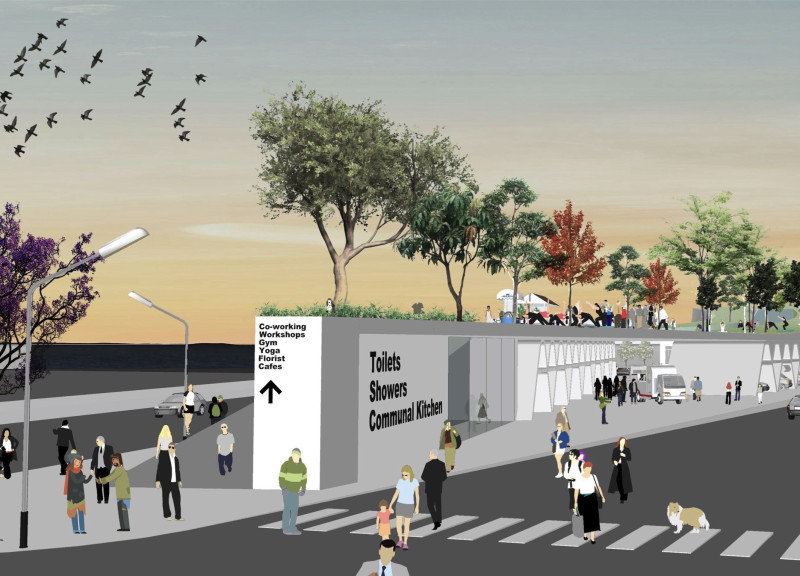5 key facts about this project
The project addresses the urgent issue of homelessness in urban areas, focusing on the idea that housing should be a basic human right. It operates in a setting where conventional solutions have struggled to meet the needs of those without stable living arrangements. The design aims to reimagine urban spaces, particularly underutilized areas like car parks, as sites that foster community, economic opportunities, and social connections for individuals experiencing homelessness.
Conceptual Framework
At the heart of the design is a belief that homelessness is more than just the absence of shelter. It involves social disconnection and insecurity. The project strives to provide not only a physical place to stay but also a supportive environment that helps people regain stability. By doing so, it seeks to address deeper societal issues and create pathways for individuals to reintegrate into their communities.
Utilization of Urban Spaces
The innovative use of car parks as communal areas is a key feature of the design. These spaces are transformed to serve multiple functions, allowing individuals to engage in freelance work and community services. This rethinking of typical land use illustrates how neglected urban spaces can be effectively repurposed. By focusing on these areas, the design promotes activity and interaction while effectively utilizing available resources.
Communal Infrastructure
A significant aspect of the design is the idea of a "communal car park." Rather than being just a parking lot, it combines essential parking with areas for social interaction, education, and personal growth. This multifunctional space helps reduce feelings of isolation by encouraging engagement among users. By integrating various services within a single location, the design fosters a sense of community and belonging, essential for those facing homelessness.
Incorporation of Flexibility
The design emphasizes flexibility, allowing the space to adapt to the changing needs of its users. While specific materials are not mentioned, the approach suggests careful consideration of functional elements that promote durability and efficiency. By working within existing urban frameworks, the design aims to be cost-effective and responsive. This focus on sustainability reflects a commitment to creating urban environments that prioritize social equity and responsibility.
The end result is a thoughtfully designed space that encourages interaction and support among its users. It serves as a beacon for change in how communities can effectively respond to the challenges of homelessness.


















































